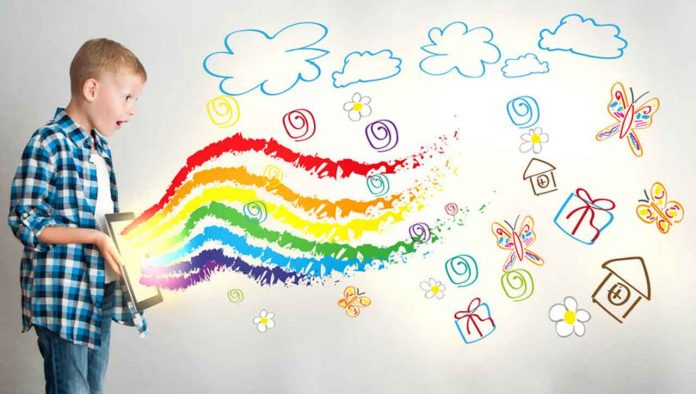Creativity is a much sought-after skill that for a long time many believed could not be taught in schools. Creativity permeates society as well as our daily lives. Whether we are reading a book, listening to music, watching a movie, or visiting a museum, creativity enriches the human experience. But the concept of creativity has more far-reaching applications. It can help solve problems, create new techniques for managing people and resources as well as make old processes more effective. With these benefits in mind, educators are looking for solutions to introduce in the classroom to help develop more creative and involved learners that can one day become future creators.
What Is Creativity?
We may think we know what creativity is, but it is a complex concept that needs to be unpacked. The standard definitions of creativity that center around artistic or aesthetic expression are inadequate when speaking of creative change educational solutions. They are doubly ineffective when considering them in regards to the current state of remote learning brought on the Covid-19 pandemic.
In the broadest terms, creativity can be described in the following three categories, articulated by Arthur J. Cropley in his 2001 book, “Creativity in Education and Training”:
- Newness: a never-before-seen process or method that strays from previous practices
- Practicality: the new method or technique works, it solves the problem
- Humane: the solution celebrates and advances humanity, it is not destructive or harmful
With these definitions established, the challenge is then to create lasting educational solutions that promote these qualities in students and the classroom. This may prove difficult as educational orthodoxy for so long centered around simple skills and cognitive training that focused on memorization and repetition leaving little room for creative thinking.
Why “Teach” Creativity?
The three core concepts of creativity stated above do not apply solely to the purposes of creative art or self-expression. This is a misconception that kept educators from developing curriculums that promoted teaching creativity. Even if a school offered such traditionally creative-based courses or subjects like art or music, the creative impulses imparted in those classes would be dampened by the rote form of cognitive learning in other disciplines.
There is now empirical and anecdotal evidence that teaching, or, fostering, creativity at an early age has a multitude of benefits. And it is not difficult to see why. Business leaders have long prized creative solutions to their myriad problems. Technology-based sectors like software development and programming are knowledge-based but individuals who approach problems creatively are often better-paid.
Teachers Speak Up
A 2019 Gallup study also added weight to the argument that “teaching” creativity yields tangible and beneficial results. The study surveyed around 1,000 K-12 teachers, as well as over 3,000 elementary and school-age students. The study found that:
- 85% of teachers who blend an emphasis on creativity with technology reported seeing their students engage more in problem-solving
- 74% of teachers said that their students retained more of what they learned when their instruction combined creativity and technology
- 59% of teachers said that their students gained a deeper understanding of the subject matter when creativity and technology were combined
The key to these findings is not simply that fomenting creativity in the classroom is beneficial. The most important revelation is that creativity is also better taught when it is supported by new technologies. This finding is especially important in the age of Covid when schools are closed and a majority of learning is done online and remotely.
How To Teach Creativity During Remote Learning
Many of the strategies that teachers had begun experimenting with to create more creativity-inducing environments are not so easily transferred to the realm of online learning. But many still apply, even when students are separated from the classroom environment. That separation is advantageous, as the Gallup study also found that typical school environments can hinder a student’s creative development.
Here are a few ways that teachers can begin preparing their students to unleash their creativity, even during online learning:
Allow More Freedom
This may seem like a simple strategy, but many teachers have reported students reluctant to share their ideas or solutions to problems in class out of fear. The fear stemming from the fact that their solution departed from the instructions that were taught. Teachers who eschew the traditional methods and explicitly instruct their students to do so as well will empower students to share their unconventional ideas, even if they do not work.
Careful Use of Technology
Previously, e-learning education was something only done by university or mature students. But even before the pandemic, schools were harnessing new technology to improve learning for all students. Studies have shown, however, that technology alone is ineffective in improving student performance. As the Gallup survey demonstrated, combining free-form thinking with technological aids is the best way to encourage students to problem-solve.
While the prevailing thinking is that technology-in-the classroom is a distraction, remote learning has forced an uneasy dependence on e-learning tools and platforms. Teachers and school districts should be careful in choosing their platform, though. Some e-learning tools can help foster creativity, but they more often than not replicate classroom conditions where learning is teacher-focused and does not allow students to think more freely.
There are certain applications that prompt students to be creative, ask more questions, comment on their classmates’ responses and even participate in virtual discussions. A tool like Lumin PDF, which has wide compatibility with other standard educational tools like Google Drive, lets users mark, comment, and highlight passages in PDF files so others can see them.
Encourage and Reward Creativity
It is counterintuitive to think that students would be hesitant to express themselves in class, but that is the reality for many. Students, especially young ones, may not have the confidence or self-esteem to express their creativity in the classroom. But, conversely, students who feel they are encouraged to be more creative also report feeling more confident, which only drives their creativity further.
While no teacher would actively suppress a student’s creativity or outside-the-box thinking, many may not know they are doing it. It can be difficult to gauge a student’s ability to think critically, especially if the only measures are test scores and grades. One way to reveal a student’s abilities is to create an environment where such thinking is rewarded and encouraged.
No-Answers Teaching and Discussions
One of the most effective ways to encourage students to be more creative and forward-thinking is by presenting them with challenges that do not have easy answers. So much of modern learning involves giving the right answers and getting rewarded for it that students see no sense in deviating from that dynamic.
When presented with a challenge to that norm – if they are presented with it – students will take their first steps toward developing critical thinking skills. If the very notion of right/wrong answers is questioned, that might be the moment when their imagination and intuition take over to guide them to explore and question even more.







